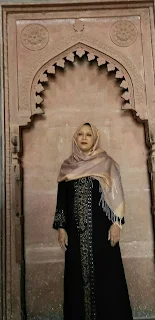19th April 2003 is an important day in the annals of Jamaat-e-Ahmadiyya (Qadian). It was on this day that the reigning caliph of the Jamaat, Khalifatul Massih IV Hazrat Mirza Tahir Ahmad [1928-2003], passed away in London, UK. For devout Ahmadis, the day marked the end of an era within the ‘Khilafat-e-Ahmadiyya’ system established after the death and departure of Promised Messiah Hazrat Mirza Ghulam Ahmad (as) [1835-1908] almost a century back in Qadian, India. An important phase in the succession saga of spiritual leadership in the Ahmadiyya community, the Day marks a time of transition from one caliph to another elected by the assembly of the Ahmadis. Indeed, as is widely known, the Jamaat-e-Ahmadiyya went on to elect and appoint yet another caliph in their 'Majlis Shura', in succession to the deceased fourth caliph, the fifth Khalifatul Massih Hazrat Mirza Masroor Ahmad on 23 April 2003, marking continuity of leadership.
Perhaps less widely-noticed, yet a very vital, parallel development also took shape on that eventful day of 19 April 2003. Far away from London, half way across the world, in the Indian Ocean-bound island state of Mauritius, an Ahmadi who believed in the divine mission of the promised Messiah (as), a man who claimed the authority of divine revelations, began accepting Bai’at at his hands from the Ahmadis, stating that he has been bestowed with spiritual titles, including as Hazrat Amir'ul Mu'mineen of this era. Hence, many Ahmadi followers of the new Divinely-raised Muhyiuddin relate the day with the formal inaugural of a new system of ‘Khilafat’ among the Ahmadis, heralding the advent of a Divine Manifestation among the Ahmadis in this era, Alhamdulillah, Allah-u-Akbar!








